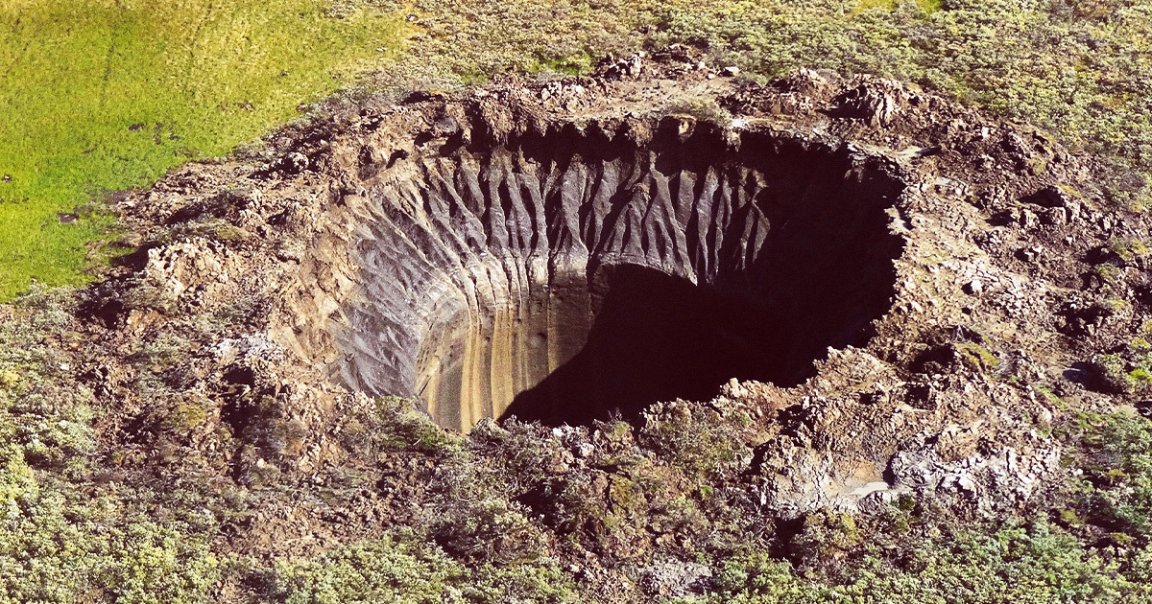
Crater Creator
Sudden and violent explosions have been leaving behind massive craters in the permafrost of Siberia — some nearly 70 feet wide and over 170 feet deep. The phenomenon has puzzled scientists since the first of these exploding craters were discovered back in 2012.
Now, a team of researchers claim to have solved the mystery. Their new study, which is yet to be peer reviewed but available online, pins the blame on a huge build up of hot natural gas beneath the permafrost, which bursts through the region’s once impermeable layer of frozen earth thanks to rising temperatures above the surface.
“Climate change is likely the triggering factor, but it happens there because you have the thinning of the permafrost due to the gas,” lead author Helge Hellevang at the University of Oslo in Norway told New Scientist.
What’s more, these exploding craters could release vast amounts of unaccounted for methane emissions that drive global warming, in addition to damaging local oil and gas infrastructure.
Gas Leak
Until now, some scientists believed that these craters were caused by methane released by the thawing permafrost itself.
Hellevang argues that this doesn’t explain why the explosions only occur in Siberia and Northern Russia, and not other regions of the Arctic. Beyond that, he adds that the permafrost wouldn’t contain enough methane to produce explosions of this scale.
Instead, the researchers suggest that the methane is coming from hot natural gas released deep in the Earth, possibly from a geological fault. As the gas builds up, it gradually thaws the permafrost, with rising temperatures above the surface joining to weaken it further.
The result is that the gas suddenly breaks through, an awesome rupture that blasts earth and ice hundreds of feet in every direction.
“I think their idea makes sense,” Lauren Schurmeir at the University of Hawai’i, who has also published research on the craters but was not involved in the study, told New Scientist.
Plot Holes
Still, there are a few caveats. Schurmeir points out that Helvelang’s work isn’t backed up by observations on an actual crater, of which there are only eight discovered so far. She adds that there could also be multiple causes behind them.
If the new research is correct, however, it could mean that the exploding craters are releasing huge amounts of methane, which is a powerful greenhouse gas.
“If that’s the standard way that large accumulations fail then you’re dumping a lot of methane in a very short time,” Thomas Birchall at the University of Svalbard, who recently published a paper on methane trapped in Norway’s permafrost, told New Scientist.
Hellevang doesn’t disagree, but cautions against overestimating the impact these explosions have. After all, few have been observed, and it’s unclear how much methane could actually be escaping.
With more research, hopefully “we can have a more realistic budget on how much can be released because of atmospheric heating or climate change,” he told Business Insider.